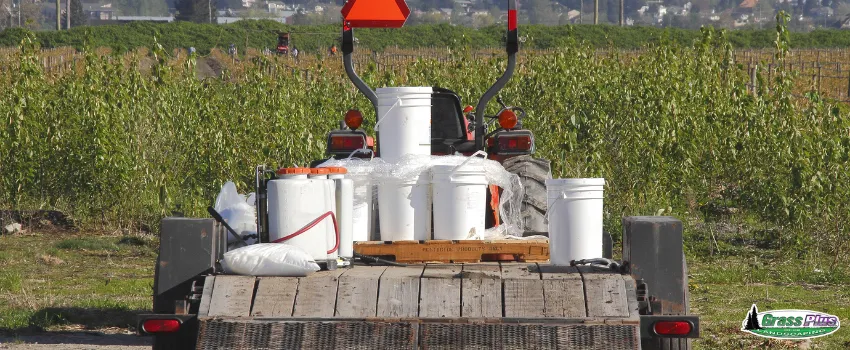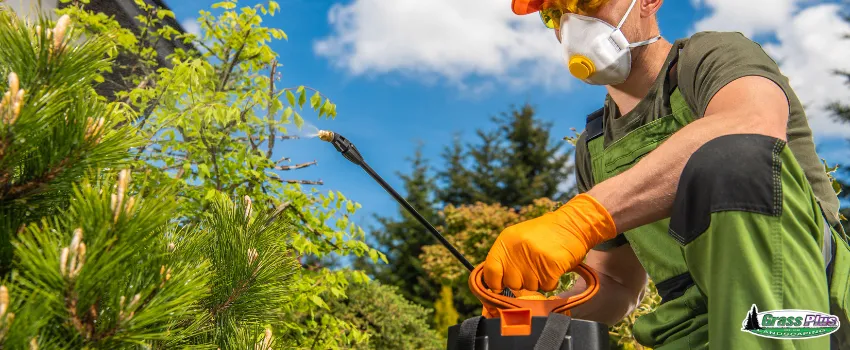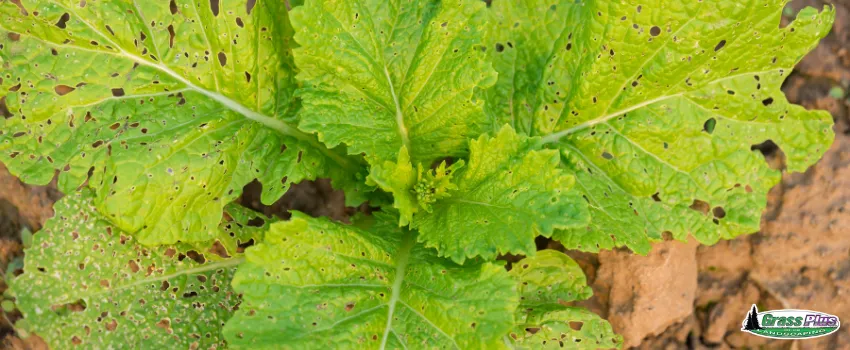Navigating the complexities of herbicide application requires a blend of precise techniques and safety protocols. Effectiveness and safety hinge upon integrated pest management (IPM), an approach marrying effective pest control and environmental safety. IPM ensures that lawn and landscape herbicide is applied efficiently and responsibly, optimizing their benefits while mitigating risks.
The efficiency of herbicide use depends on various factors, including timing, method, and environmental conditions. Proper application safeguards the applicator’s health and prevents herbicide drift, ensuring adjacent plants and ecosystems remain unaffected. However, challenges like herbicide resistance persist, emphasizing the need for ongoing adaptation in application strategies, where IPM’s balanced approach proves invaluable.
Selecting the Right Lawn and Landscape Herbicide

Choosing the appropriate herbicide is a cornerstone in effective weed management. It should be tailored to the specific weeds present, the landscape, and the surrounding environmental conditions. The application of herbicides must also consider the long-term health of the ecosystem.
Factors Affecting Herbicide Selectivity
Herbicide selectivity is crucial for effective weed control in agriculture. However, achieving the right balance is complex and influenced by various factors:
1. Chemical Composition
Different herbicides are formulated to target specific plant species. Understanding their chemical makeup helps select an effective product against intended weeds while sparing the desired vegetation.
2. Application Methods
The method of herbicide application significantly influences selectivity. Techniques vary, and knowing how to apply herbicide appropriately ensures that the chemical reaches and affects only the intended targets.
3. Environmental Conditions
The weather, soil type, and other environmental factors should be considered. These elements can impact the herbicide’s effectiveness and selectivity.
4. Plant Growth Stage
Herbicides are often most effective at certain weed growth stages. Identifying these stages is crucial to enhance herbicide effectiveness.
Factors Affecting Herbicide Resistance
Herbicide resistance is another concern in agriculture, posing challenges for effective weed management. Various factors can contribute to this resistance:
1. Overreliance on a Single Herbicide
Repeated use of the same chemicals can lead to resistance. Rotating herbicides or integrating non-chemical control methods reduces this risk.
2. Incorrect Dosage
Applying the wrong dose, either too low or too high, can accelerate the development of resistance in weed populations.
3. Poor Application Techniques
Inconsistent or incorrect herbicide application methods can lead to incomplete control and encourage the survival of resistant weeds.
Proper Herbicide Application
Proper herbicide application is essential for effective weed control and healthy crop yield. Incorrect usage can lead to resistant weeds, environmental harm, and even crop damage. Certain techniques and precautions must be followed to ensure proper herbicide application:
Herbicide Application Techniques
- Spraying: This is a common technique where herbicides are sprayed directly onto the weeds. The appropriate selection of spray nozzles and implementation techniques is essential to ensure uniform distribution and minimize scattering.
- Granular Application: This involves applying granular herbicides to the soil. It’s especially useful for pre-emergent weeds and provides longer-lasting control.
- Wick Application: A method where herbicides are applied using a wick or sponge to transfer the chemical directly onto the weeds, reducing the risk of drift.
Herbicide Application Precautions
- Personal Protective Equipment (PPE): Always wear appropriate PPE to minimize exposure during the application of herbicides.
- Follow Label Instructions: The label provides essential information on how to apply herbicide, including the dosage, application method, and safety precautions.
- Avoid Sensitive Areas: Keep a safe distance from water bodies, gardens, and other sensitive areas during herbicide application to prevent contamination.
Increasing the Efficacy of Herbicide Use
Increasing the efficacy of herbicide use is vital for both cost-effective and environmentally responsible weed management. The following are the strategies and best practices to maximize the impact of herbicides:
1. Know the right timing.
The application of herbicides is crucial when weeds are most vulnerable, often during early growth stages. The timing increases the herbicide use efficacy and reduces the amount needed.
2. Follow the correct dosage.
Adhering to the recommended dosage ensures that the application of herbicides is effective without being excessive.
3. Consider the optimal weather conditions.
Knowing how to apply herbicide under calm, dry weather conditions enhances absorption and minimizes drift.
Common Mistakes in Herbicide Application and Their Consequences
1. Inadequate Planning
- Mistake: Failing to plan for and evaluate the specific lawn and landscape herbicide needs, including the selection of appropriate chemicals and application techniques.
- Consequence: This often leads to poor weed control, damage to desired plants, and unintended environmental contamination. The misuse or overuse of herbicides can also spur the development of herbicide-resistant weed populations.
2. Ignoring Label Instructions
- Mistake: Overlooking the manufacturer’s guidelines on how to apply herbicide effectively and safely.
- Consequence: This can result in ineffective weed control, damage to adjacent plants, and potential health risks to applicators and nearby ecosystems. It undermines the balance between effective weed management and environmental safety.
3. Improper Dosage
- Mistake: Too much or too little herbicide use, often stemming from miscalculations or negligence.
- Consequence: Over-application can lead to residual chemicals in the soil, contamination of water sources, and harm to non-target plants and animals. Under-application may result in inadequate weed control and the emergence of herbicide-resistant weeds.
4. Inaccurate Timing
- Mistake: Applying lawn and landscape herbicide at the wrong time, missing the optimal window for effective weed control.
- Consequence: This mistake can reduce the effectiveness of the herbicide, necessitating additional applications and leading to increased costs and potential environmental harm.
5. Poor Technique
- Mistake: Utilizing incorrect herbicide application techniques, such as wrong spray pattern, nozzle type, or equipment calibration.
- Consequence: Poor technique can cause herbicide drift, leading to the contamination of adjacent areas, harm to beneficial plants, and potential health risks to humans and wildlife.
6. Neglecting Safety Protocols
- Mistake: Failing to use appropriate personal protective equipment (PPE) and safety protocols during herbicide application.
- Consequence: This exposes applicators to potential health risks, including skin and eye irritation, respiratory issues, and other health complications depending on the chemical’s toxicity.
7. Lack of Monitoring and Follow-Up
- Mistake: Failing to monitor the treated area post-application to assess the effectiveness and any unintended impacts of the herbicide use.
- Consequence: This can lead to unchecked weed growth, recurrence of weed infestations, and unidentified environmental and health impacts, negating the benefits of the initial application.
Integrated Pest Management in Herbicide Application
Integrated Pest Management (IPM) is a holistic, multi-faceted approach to pest control that integrates various strategies to manage pests effectively, economically, and with minimal harm to people and the environment. It combines biological, cultural, physical, and chemical methods to provide comprehensive and sustainable pest control solutions.
Benefits of IPM
- Environmental Protection: IPM reduces dependence on chemical control methods, minimizing the risk of environmental contamination. Ecosystems are preserved and enhanced by promoting biodiversity and natural pest control mechanisms.
- Economic Efficiency: Using a combination of control methods, IPM can be more cost-effective in the long term. It focuses on preventing pest problems and reducing the need for expensive, large-scale chemical interventions.
- Human and Animal Health: IPM minimizes the exposure of people, pets, and livestock to chemicals, reducing health risks associated with pesticide and herbicide use.
- Resistance Management: The varied strategies employed in IPM reduce the risk of pests developing resistance, which is a common issue in exclusive chemical control scenarios.
How IPM Improves the Pest Control Process
- Targeted Application: IPM encourages the precise, targeted application of herbicides. It reduces the volume needed and minimizes non-target exposure and environmental impact.
- Preventive Strategies: Through monitoring and preventive actions, IPM addresses pest problems before they escalate.
- Biological Control: By promoting natural enemies of pests and weeds, IPM reduces dependence on chemical methods. This enhances biodiversity and ecosystem health.
- Cultural Practices: IPM emphasizes proper land and crop management practices to make the environment less conducive for pests. It complements and reduces the need for herbicides.
- Education and Training: IPM fosters knowledge and skills development among growers and applicators, promoting safer, more effective herbicide usage.
Key Takeaway
Herbicide application is an intricate process influenced by a series of crucial steps, each essential to balance effective weed control and environmental preservation. Turning to professionals is also a recommended and cost-effective option that ensures efficiency and safety in using herbicides. Integrated Pest Management (IPM) is a comprehensive approach to enhancing the safety and efficacy of herbicides.
IPM not only addresses common issues like herbicide drift and resistance, but also optimizes the overall process. It ensures that herbicides are used judiciously and effectively, safeguarding both human and environmental health.
If you are looking for expert herbicide services, Grass Plus, Inc. is here for you!
Discover a world where quality, efficiency, and environmental safety in weed control converge. At Grass Plus, Inc., we provide the best herbicide application Utah has to offer. We ensure your lawn is not just weed-free but also healthy and vibrant. Connect with us, and let’s nurture your landscape to its full potential!








